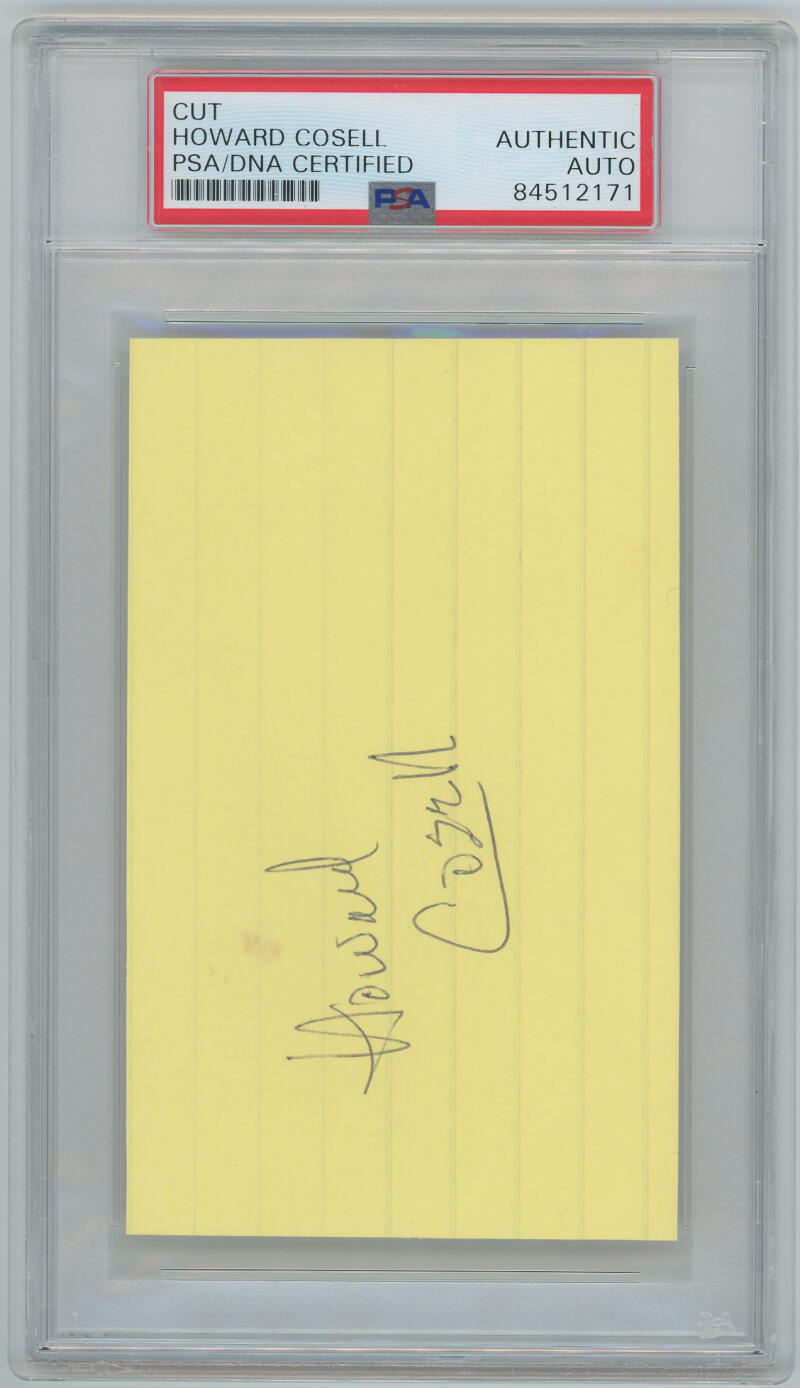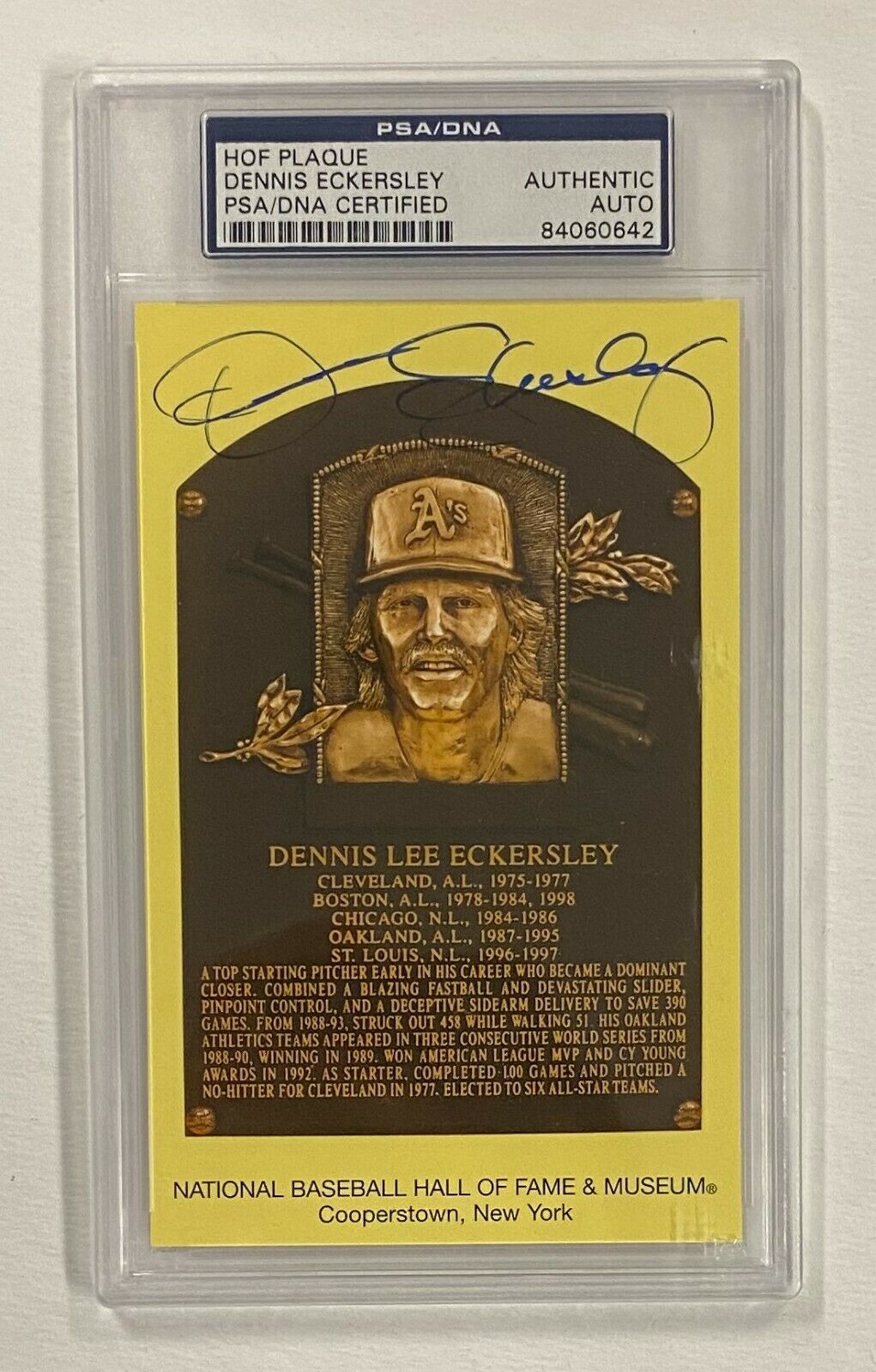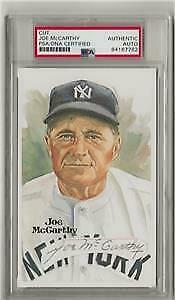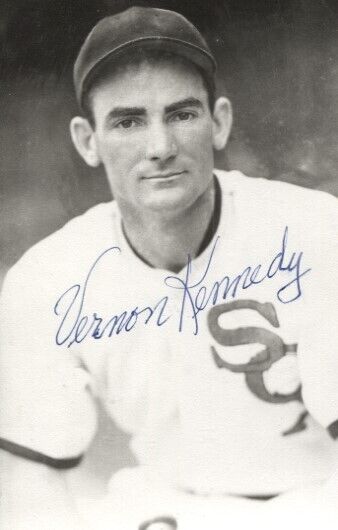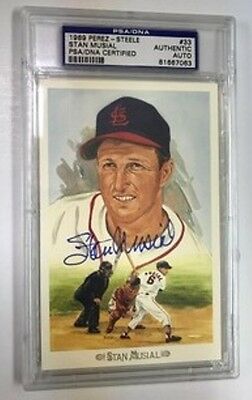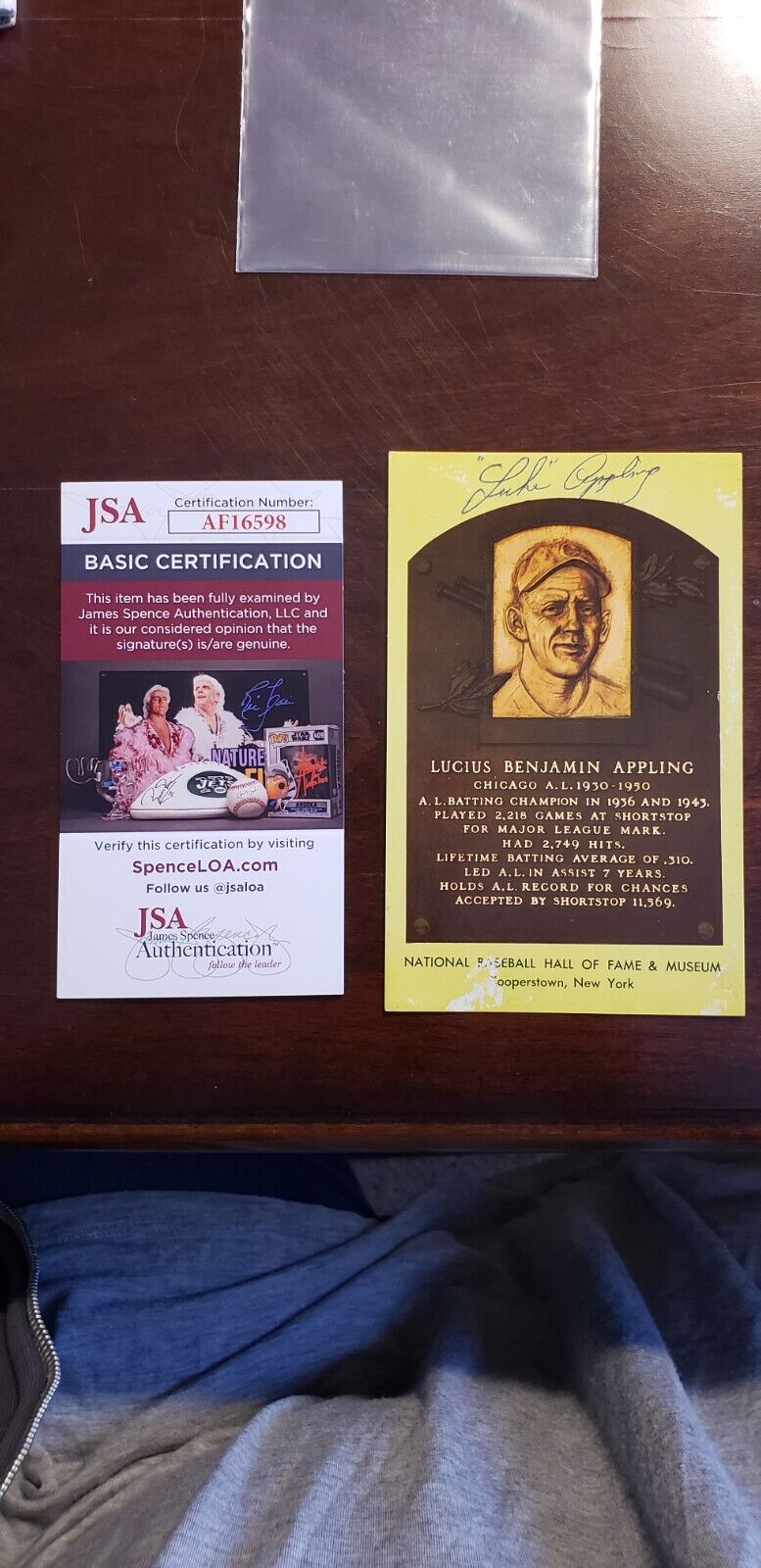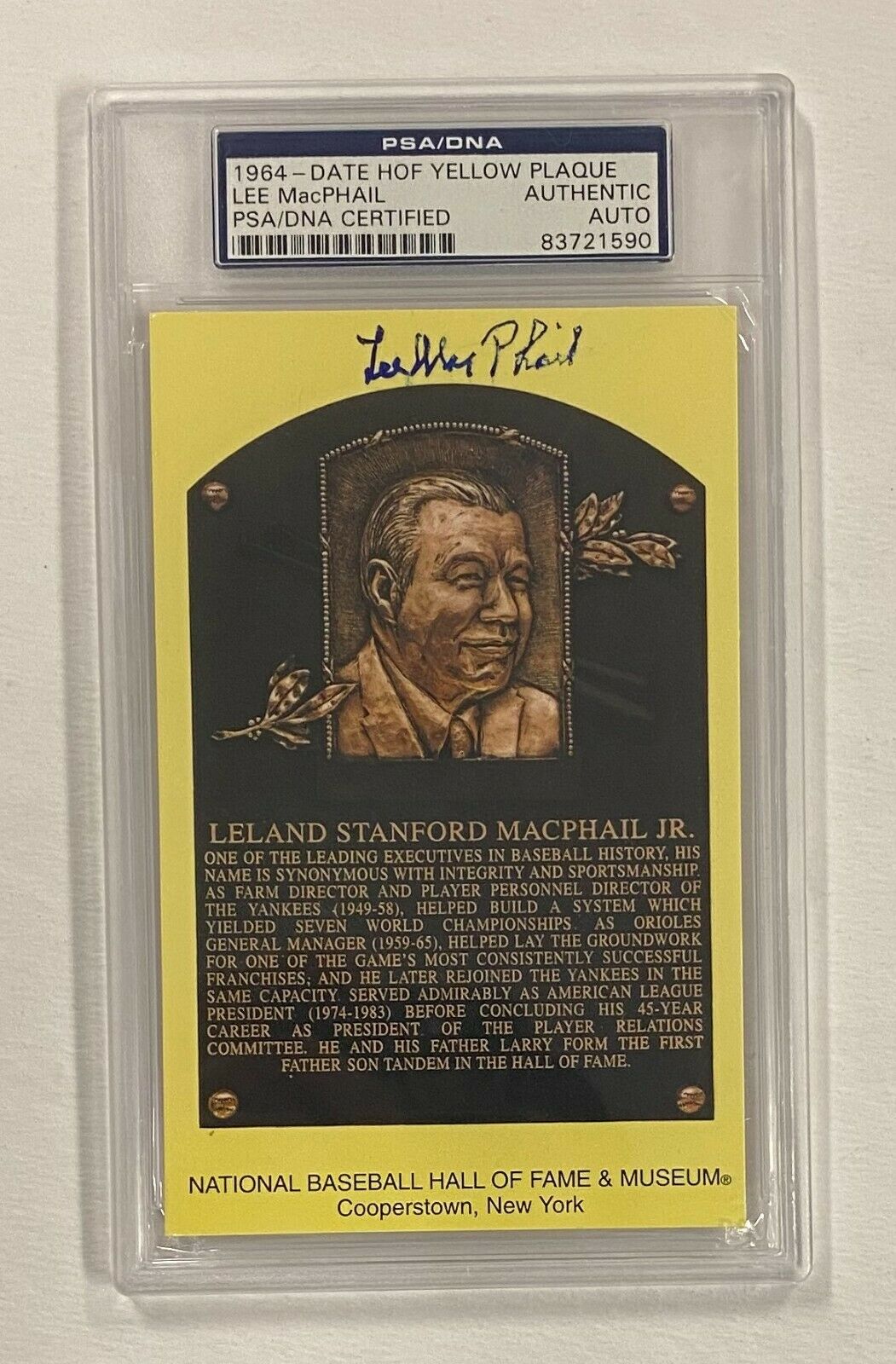-40%
Mickey Owen Chicago Cubs Baseball Autographed George Brace Postcard Photo
$ 2.37
- Description
- Size Guide
Description
You are bidding on an autographed Brace Postcard photo,features Mickey Owen
....All autographs are guaranteed to pass PSA or JSA...
Arnold Malcolm "Mickey" Owen
(April 4, 1916 – July 13, 2005) was an American professional
baseball
player,
coach
and
scout
. He played as a
catcher
for 13 seasons in
Major League Baseball
(
MLB
) between
1937
and
1954
for the
St. Louis Cardinals
,
Brooklyn Dodgers
,
Chicago Cubs
and
Boston Red Sox
. Considered an outstanding defensive catcher,
[1]
his career was nonetheless marred by a crucial
error
that he committed during the
1941 World Series
.
[1]
He also was one of the better-known MLB players who defected to the insurgent
Mexican League
in
1946
, which resulted in a suspension that cost him over three prime seasons of his big-league career.
The longest-running operation of all the great early photographers, George Burke and George Brace covered baseball in one form or another for the better part of the 20th century—from 1929 to the 1990s. Their tenure had an auspicious beginning, to say the least. In 1929, Cubs manager Joe McCarthy and catcher Gabby Hartnett sought out the ballclub’s previous photographer. They could only remember his last name, Burke, so they looked him up in the phone book. A listing leapt out at them: studio photographer George C. Burke, whose office was located near Wrigley Field. Thus began the baseball photography career of George Burke, who had no prior sports experience, and thus ended the career of photographer Francis Burke—the Cubs’ time-honored official cameraman and an unwitting victim of mistaken identity.
George Burke hired a young, baseball-knowledgeable assistant named George Brace, and the two soon became a
Chicago
institution. Ever-present at Wrigley Field and
Comiskey
Park
, Burke and Brace endeavored to amass a complete portfolio of player portraits—a daunting task made possible by the fact that
Chicago
was the only city with both an American League and a National League franchise from 1929 all the way until Brace’s retirement in 1993. Nary a visiting ballplayer refused a quick sitting during
Chicago
home stands. Some even stopped by Burke and Brace’s studio for additional, more formal portraits. The tandem was also well-known for endearingly candid pre-game and off-the-field shots—proof positive that both photographers were always welcomed by their famed subjects, embraced by them as friends at the stadium, at parties, in hotels, and on the street.
The Sporting News
,
Baseball Digest
and
Who’s Who in the Major Leagues
were just a few of the publications in which Burke and Brace’s work frequently appeared.
In 1948, Burke suffered a heart attack. Brace carried on the business for several years in order to offset his partner’s medical expenses. Then, upon Burke’s death in 1951, Brace reduced his commitment from a job to an all-encompassing hobby. Though no longer their official photographer, he was still allowed full access by the Cubs and Sox organizations. It was a privilege he would maintain up until his death, a half-century later. With the exception of time spent as a
U.S.
Army medic in the South Pacific during World War II, Brace attended at least one game of every home series at Wrigley Field and
Comiskey
Park
throughout his entire 65-year career. For many of those years, he worked late shifts or odd jobs that paid his expenses and wouldn’t conflict with the game schedule. He always liked to arrive at the ballpark several hours early, when players were just arriving and fans were nowhere to be seen. In 1994, his age finally caught up with him. Worsening eyesight forced his retirement from this long-time labor of love. Brace followed baseball up until the end and also co-authored a book,
The Game That Was: The George Brace Photo Collection
.
Note that items with COAs come with individual COAs, sticker usually on back of item. I do not accept "Best Offer". Prices are reduced every 30 days until the item sells. Thanks for understanding this policy!
New items will be added the first of the month...prices on existing items will be reduced at the end of each month
POSTAGE: .50 first item; 50 cents ea additional lot
The longest-running operation of all the great early photographers, George Burke and George Brace covered baseball in one form or another for the better part of the 20th century—from 1929 to the 1990s. Their tenure had an auspicious beginning, to say the least. In 1929, Cubs manager Joe McCarthy and catcher Gabby Hartnett sought out the ballclub’s previous photographer. They could only remember his last name, Burke, so they looked him up in the phone book. A listing leapt out at them: studio photographer George C. Burke, whose office was located near Wrigley Field. Thus began the baseball photography career of George Burke, who had no prior sports experience, and thus ended the career of photographer Francis Burke—the Cubs’ time-honored official cameraman and an unwitting victim of mistaken identity.
George Burke hired a young, baseball-knowledgeable assistant named George Brace, and the two soon became a
Chicago
institution. Ever-present at Wrigley Field and
Comiskey
Park
, Burke and Brace endeavored to amass a complete portfolio of player portraits—a daunting task made possible by the fact that
Chicago
was the only city with both an American League and a National League franchise from 1929 all the way until Brace’s retirement in 1993. Nary a visiting ballplayer refused a quick sitting during
Chicago
home stands. Some even stopped by Burke and Brace’s studio for additional, more formal portraits. The tandem was also well-known for endearingly candid pre-game and off-the-field shots—proof positive that both photographers were always welcomed by their famed subjects, embraced by them as friends at the stadium, at parties, in hotels, and on the street.
The Sporting News
,
Baseball Digest
and
Who’s Who in the Major Leagues
were just a few of the publications in which Burke and Brace’s work frequently appeared.
In 1948, Burke suffered a heart attack. Brace carried on the business for several years in order to offset his partner’s medical expenses. Then, upon Burke’s death in 1951, Brace reduced his commitment from a job to an all-encompassing hobby. Though no longer their official photographer, he was still allowed full access by the Cubs and Sox organizations. It was a privilege he would maintain up until his death, a half-century later. With the exception of time spent as a
U.S.
Army medic in the South Pacific during World War II, Brace attended at least one game of every home series at Wrigley Field and
Comiskey
Park
throughout his entire 65-year career. For many of those years, he worked late shifts or odd jobs that paid his expenses and wouldn’t conflict with the game schedule. He always liked to arrive at the ballpark several hours early, when players were just arriving and fans were nowhere to be seen. In 1994, his age finally caught up with him. Worsening eyesight forced his retirement from this long-time labor of love. Brace followed baseball up until the end and also co-authored a book,
The Game That Was: The George Brace Photo Collection
.
......
Shipping and Packaging details: I ship everything with cardboard backing. Additionally, I slip all autographed photos inside sturdy photo-protective sleeves. Payment details: Typically, I ship paypal payments right away. PAYPAL is recommended. International shipping will be higher as all international orders go through the Global Shipping program. How I obtained my autographs, and why I promise a FULL MONEY-BACK GUARANTEE: As a kid, from roughly the years 1965 to 1973, and later from 1974-the present, I have amassed an enormous collection of autographed sports and celebrity memorabilia. In most cases, using Jack Smalling's baseball address lists and other assorted address lists, I wrote to both active and retired baseball players, sending them letters, requests for signatures, and self-addressed-stamped envelopes. This is how I obtained thousands of autographs. I also obtained many autographs in person at area parks and hotels.In the 1980's and 1990's, I travelled the country doing shows (20 National Conventions) and would buy quantities of autographs through player signings. I have every reason to believe that all of the autographs I'm selling are absolutely authentic. I stand by every item I sell. Upon purchasing an item from me through eBay, you may return that item, in the condition in which I shipped it to you, within 14 days of receipt of that item if you are not satisfied with the item. I am selling each item "as is", per the guarantee I've promised above. All the old time autograph dealers know me and the professional authenticators will vouch for my reputation as well. I do this on a part time basis, so sometimes emails take a day. I have worked hard for my feedback rating. The last thing I want to do is damage my credibility, so if you have legitimate concerns about any item you win from me on eBay, I'll make every effort to remedy the situation to your satisfaction. PLEASE NOTE: Most items come with certificates of authenticity from outside companies (JSA and PSA predominantly; they are the best). I have spent lots of money with third party authenticators and have had very few come back without passing. Sincerely, Joe Binder , Downers Grove, Illinois

